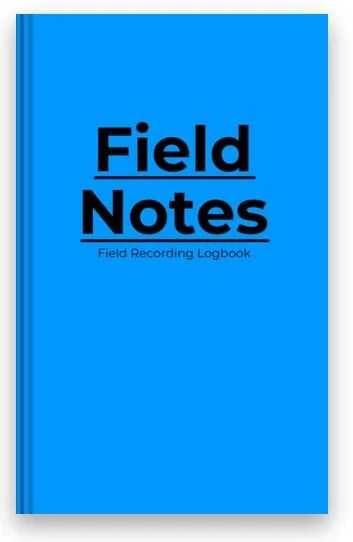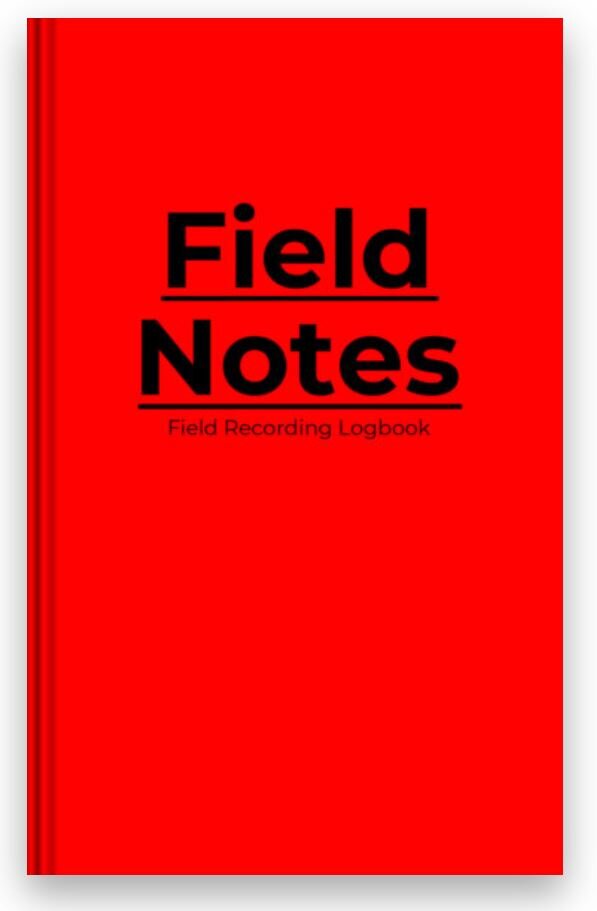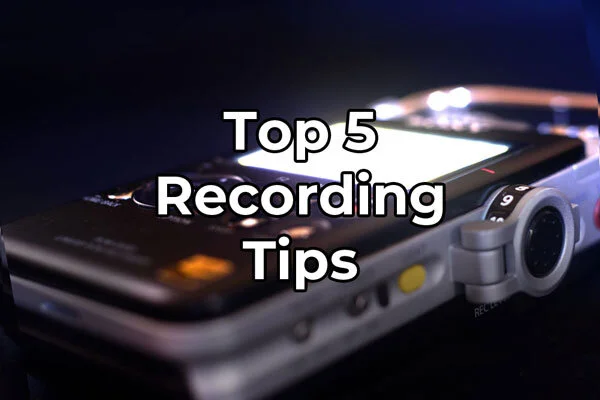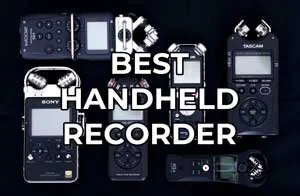Logbook for Field Recording (Customize Your Copy)
Learn why a logbook is an essential tool for any field recordist in this article!
Example of a custom cover design for Field Notes.
Too many times, I have come home from a field recording trip and have forgotten critical information about the sounds I’ve recorded. Where was this recorded? What were my settings? Did I use a high-pass filter? Sometimes I don’t even know what I am listening to!
What I needed was an audio logbook. When I discovered that none existed, I decided to make my own.
Field Notes
Field Notes is a data-logging tool to help field recordists keep track of important information and metadata while recording.
Each copy of Field Notes holds details for 236 individual tracks. Entry details include file name, date, location, time, recorder, gain, mics, lo-cut, and a lined section for any additional notes (environment settings, species, type of sfx, etc.)
At 5×8 inches it is small enough to easily fit into any bag. Store it with the rest of your recording gear so you always have it with you.
Its soft cover is flexible, yet durable enough to withstand the field. Mine has survived countless hikes in my bag and even in my back pocket.
Field Notes will help keep your recordings organized, help you record better metadata, and create a physical memory of your recording adventures as you fill up its pages.
Details:
120 pages
236 entry capacity
5×8 in (13×20 cm)
Softcover
Customizable
Design Options:
Customize Your Logbook
If you are interested in Field Notes but want different details like sample rate, bit depth, extra pages, or custom cover artwork, just send me an email through my contact page and I will be happy to create your personalized version!
You can simply change the existing words, or you can completely redesign the pages to fit your needs. I am an experienced graphic designer and I am confident that I can recreate your vision.
If you would like a copy with a custom cover, the front cover measures 1245px wide and 1980px tall.
If you want a wrap-around cover with seamless transitions from front-to-back, the dimensions are 2490px wide and 1980px tall.
Your image of choice should be close to these sizes for best print quality.
Example page from customized version of Field Notes. Email me to design your own copy to fit your needs.
Why Data Logging is Important
Data logging is important for three main reasons:
it helps you learn
it creates repeatable results
it helps you create great metadata
There are tons of variables in field recording. Location, time of day, equipment, mic placement, duration, weather, and gain settings are just a few. With these many decisions to make, it is almost impossible to get a “perfect” recording (but that’s okay!).
By recording these decisions in a logbook, you will learn what worked and what didn’t so that the next time you go out, you can tweak your decisions in pursuit of that perfect recording.
Maybe your gain was too high and your audio was clipping. Maybe your L-R balance was off. Maybe you really liked a creative mic placement but you shouldn’t have used the lo-cut filter.
The point is, without a record of these settings, you won’t remember them and will likely make the same mistakes again and again.
On the other hand, if you make an amazing recording, you’ll likely have difficulty repeating those results without a record of your original settings and setup.
Using a logbook easily solves these problems and will allow you to dial in the exact settings of what worked before so that you can record with confidence!
Lastly, keeping good data for your sounds will help you generate awesome metadata for your records. This is important for yourself and especially if you sell your recordings.
Good record keeping can turn “Stream in the woods” into, “Gentle stream flowing through White Mountain National Forest at 7:02am on 01/02/21 with bird chorus in background.” If you were a perspective customer, which sound would you buy?
You could get even more descriptive than this and include the weather, recording equipment, and tree species but you get the point.
How I Use My Logbook
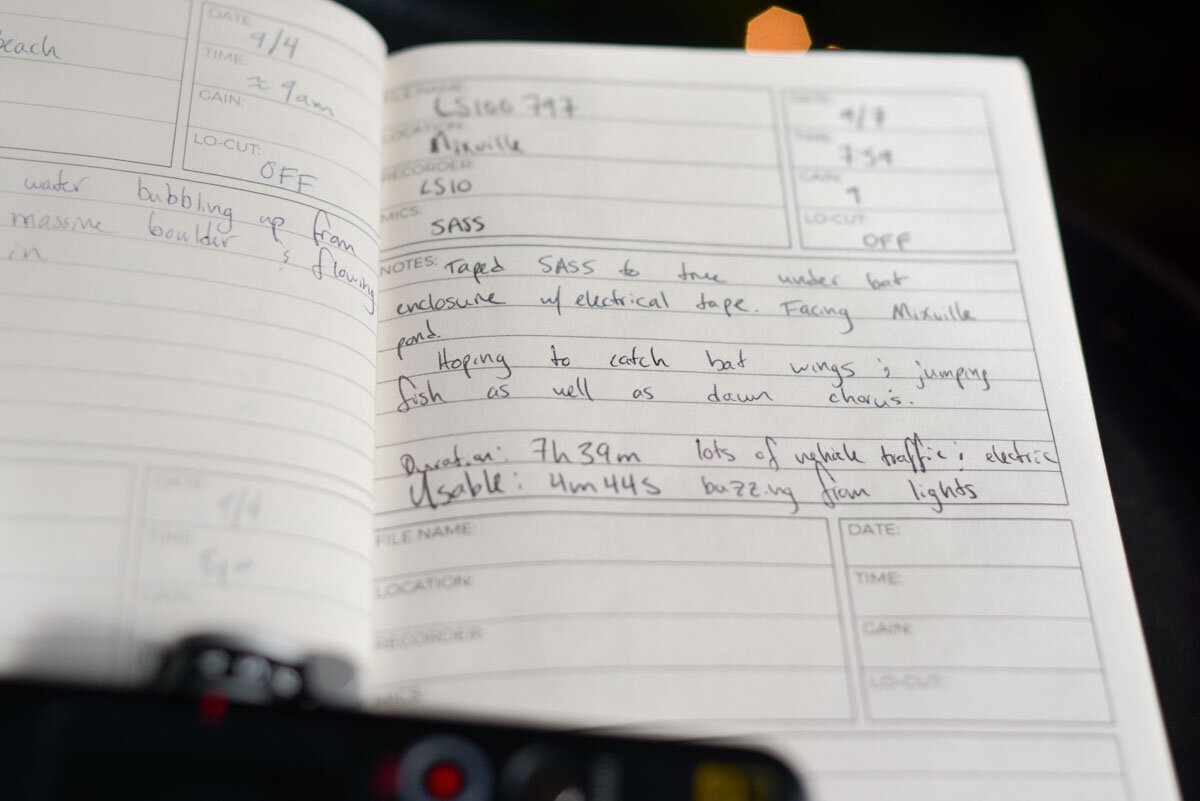
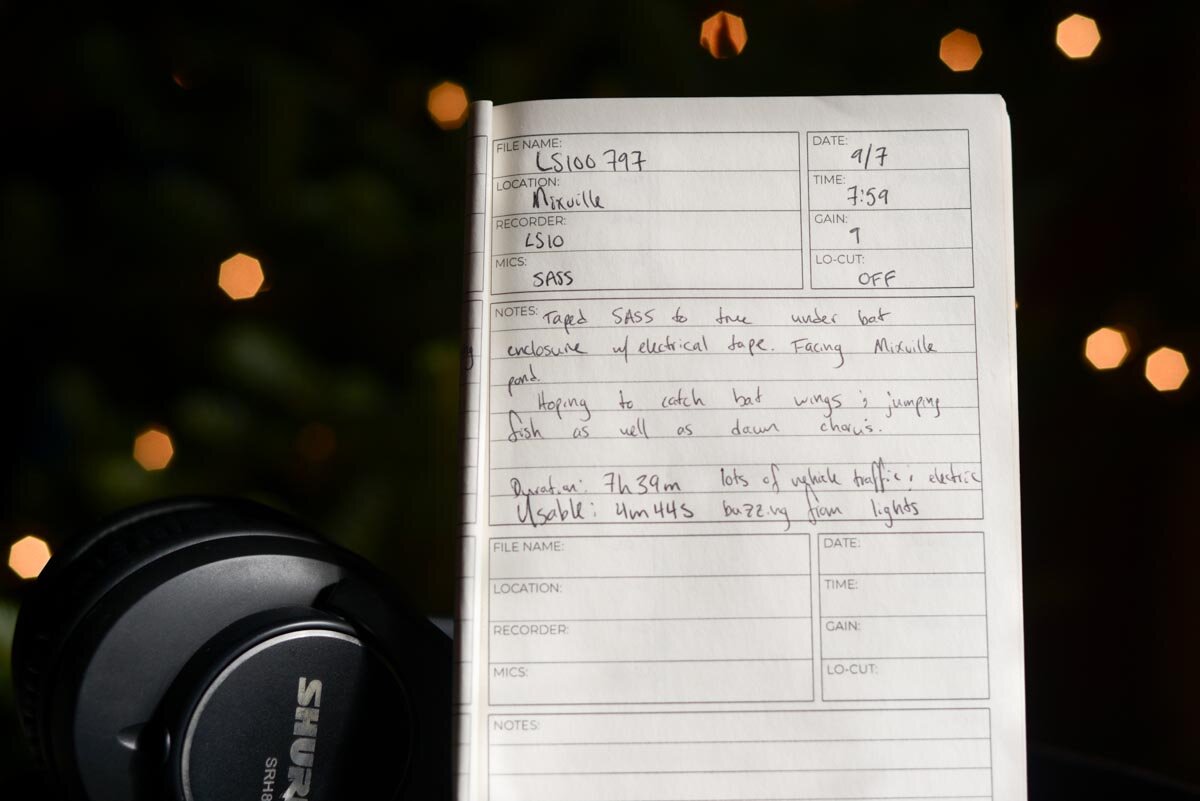
Although I’m officially launching the logbook now, I have been using one since August of 2020. Over the course of the past 6 months, I have made several changes to the original design. The version available today is the 3.0 version.
After setting up my recording gear, I get out my logbook and write down all of my settings. I usually start with the date and time. This is important when I’m using my Olympus recorder because it doesn’t have an internal clock so the date and time are almost always wrong.
Next, I fill in the file name, location, recorder, and the microphones I’m using (internal/external). After adding in my gain and lo-cut filter settings, I’m ready to relax and take some notes.
Unless I’m doing a drop-rig recording, I like to stay close to my gear and immerse myself in the environment. While listening, I jot down more descriptive information that will help me with creating good metadata in post production.
Things I like to add here include detailed descriptions of the scene, how I setup my gear, the weather, flora and fauna, and any interesting observations I make while looking and listening.
With the entry complete, I’m ready to move on to the next recording.
Final Thoughts
It has taken me a long time to create this field recording logbook. Through the last 6 months of tweaking its design, I have created a resource that I am quite proud of and excited to share with you!
Don’t forget, if you want a custom version of Field Notes, send me an email and I will make it happen!
Click here to see all available designs.
Support Acoustic Nature
If you enjoyed this post and would like to help support Acoustic Nature, please consider "buying me a coffee" or becoming a Patreon with the buttons below.
As a thank you for your support, Patreon supporters receive a copy of Field Recording For Beginners, exclusive access to the full Behind The Sounds video series, nature sound library downloads, and more.
If you are unable to support the site financially, please share this post with others, or leave a comment below letting me know you enjoyed this post! Both are free and help the website grow. Thank you ♫
Thanks for reading,
-Jared




